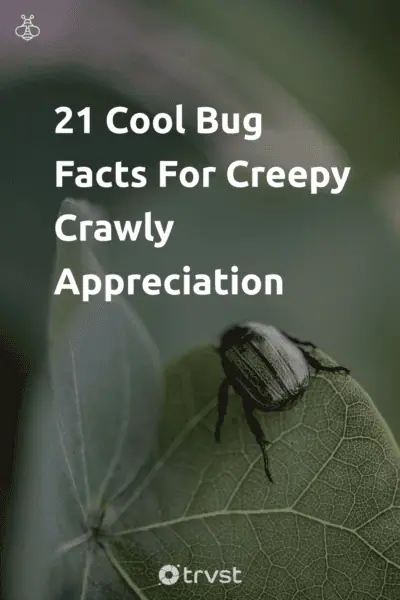21 Cool Bug Facts For Creepy Crawly Appreciation
You most likely think of a pest at the mention of the word, bug. In daily conversations, these jumping and flying animals often get described as creepy crawlies. If you're the kind of person who’s fascinated by bugs, read on to discover some cool bug facts.
Related: For more bug-spiration, check out what people have to say about them in our curated lists of the best bug quotes and bee quotes.
General Bug Facts
Bugs are types of insects that belong to the class Insecta and the group Hemiptera, characterized by two pairs of wings and three pairs of legs. Entomologists refer to members of Hemiptera as true bugs, not just bugs.
1. Bugs Live Everywhere on Earth
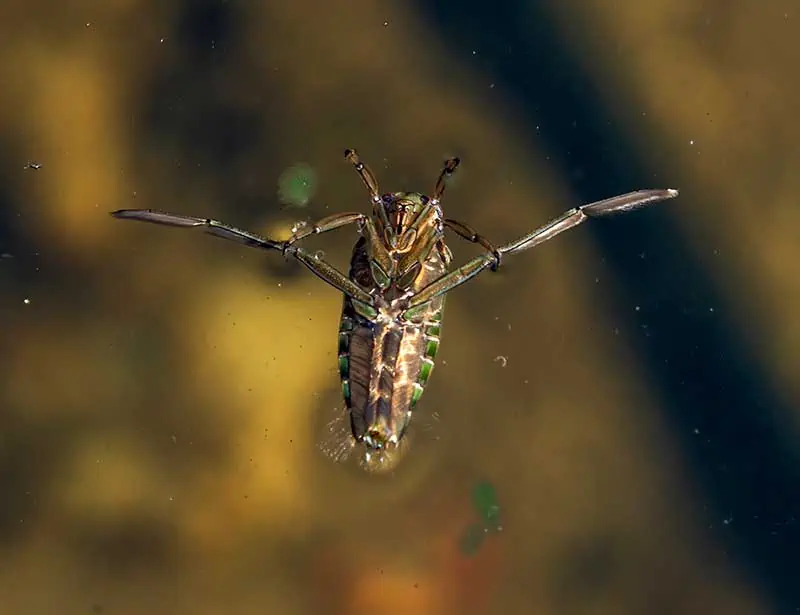
Bugs live anywhere on Earth, even in icy habitats, inhabiting virtually every corner of the planet. They live in glaciers, scorching deserts, tropical jungles, and the ocean's surface and have even adapted to living in the darkness of caverns. They are present in the coldest and hottest parts of the world, across every continent.
The water boatman, also known as the great diving beetle, is an aquatic bug. A fascinating bug fact is that great diving beetles have an ingenious trick that helps them stay in water for long periods.
Insects can’t breathe underwater and instead need air on the water's surface. To stay underwater for long periods, the water boatman hangs their body upside down and collects air through their abdomen like a breathing tube.
Curiously, the pill bug, found in moist areas, can breathe like a fish through its gills8.
2. Bug Species Outnumber Other Terrestrial Animals
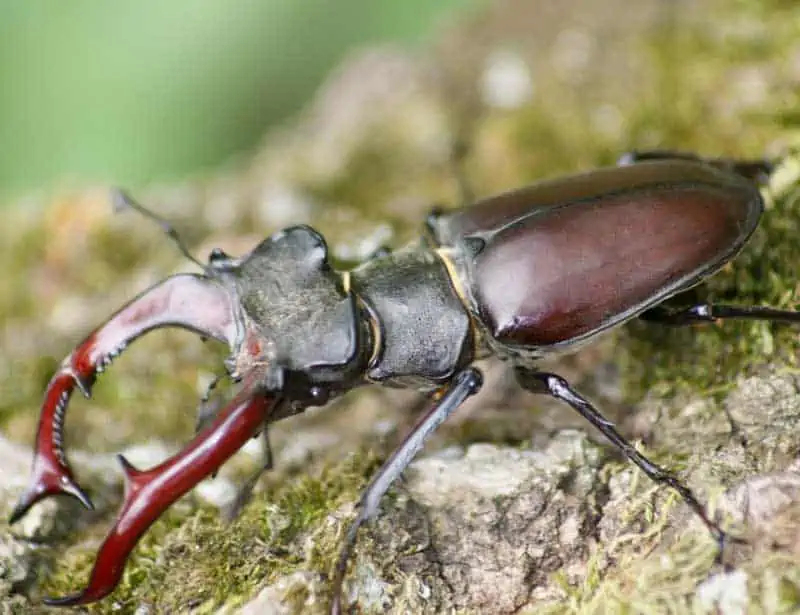
The number of insect species dwarfs that of the combined population of every kind of land animal so far. Land animal species are vast in number and variety; however, the sum is still one-third of the number of insect species.
Incredibly, there are approximately 200 million bugs for every human on earth. In the United States, there are about 91,000 different species of insects, and across the world, experts have named 1.5 million insect species4.
Some scientists estimate that the number of distinct insect species may be as high as 30 million7.
Beetles species number at least 350,000, and many are undiscovered, making them the living organism with the most kinds. In the United States alone, there are about 30,000 kinds of beetles with varying bodies and sizes. Giant walking bugs are the largest insect species in the US, while in the UK, the title goes to the stag beetle.
Related read: Biggest insects in the world.
3. All Bugs Are Insects, But Not All Insects Are Bugs

Although people use the words bug and insect as the same, they are different. Scientifically, both bugs and insects are groups in the animal kingdom. Insects are a class in the phylum Arthropoda, including arachnids, myriapods, and crustaceans.
Insects have a body segmented into three sections: the head, thorax, and abdomen. They have two antennae and six legs. Examples are grasshoppers, ants, butterflies, and bees. Some of these animals, like grasshoppers, also have special organs in their hind legs for jumping.
All bugs are insects, but not all insects are bugs. Most bugs have a straw-shaped mouth or stylet (slender probe). They use this in sapping juice from plants or blood from animals. They have long segmented antennae with tough and dark wings where they meet the body but are thin and translucent at the ends.
True bugs belong to the order Hemiptera and include cicadas, bedbugs, water striders, and stink bugs. Moreover, the distinct feature of true bugs is the possession of hypodermic needle-like mouthparts. They use this feature for piercing into tissues to slurp up fluids either from plants or other insect types. Sometimes, this includes blood from humans.
Confusingly, not all insect species that have the word bug in their name are true bugs. For instance, ladybugs and June bugs are beetles, not bugs.
Whereas many people don't like creepy crawlies, most bugs are harmless to humans. However, dangerous bugs do exist and include locusts that swarm, bees, wasps, and others that sting, and species like mosquitos that can spread disease.
4. Bugs Have Numerous Ears but None on the Head
Unlike humans and other mammals with just two ears on their upper bodies, most bugs have numerous ears all over the place, yet rarely on the actual head.
The ears of the tachinid, a parasitic kind of fly, peek out from its neck. Crickets and katydids have sound-sensitive membranes on their legs. Grasshoppers have theirs on their abdomen. Some can even detect vibrations with their mouth parts.
5. Bugs Have Compound Eyes
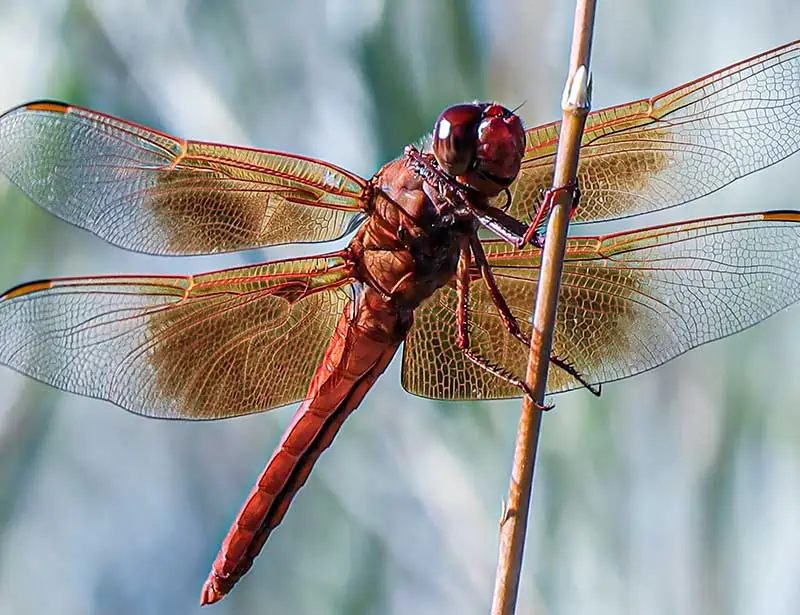
Another well-known fact about bugs is their compound eyes. A compound eye consists of various individual visual units called ommatidia. The dragonfly has the most impressive ommatidia studded compound half-spheroid eyes6 with about 30,000 units. Moreover, caterpillars have 12 sets of eyes.
6. Bugs Also Need Sun
Different insects require sunlight. The dragonfly lives among humans with the help of the sun. One of the cool bug facts about these distinctive flyers is that they derive strength and store energy from the sun's warmth, providing the strength they need to fly. Dragonflies land to rest when the sun sets and survive depending on their store of energy from the sun.
Interesting Bug Facts
7. Some Bugs Can Sing
The double drummer cicada, found on the east coast of Australia, is the loudest singing insect on earth. With a life span between four and six years, they primarily live underground and feed on roots. The adult Cicada feeds on eucalyptus sap and lives only for a few weeks.
8. June Bugs Are Most Abundant in June
June bugs got their name because they usually emerge in great swarm quantities in June when their annual population is the greatest. They travel in swarms at night in summer but hide in daylight.
9. Bugs Are Luck Talismans For Some
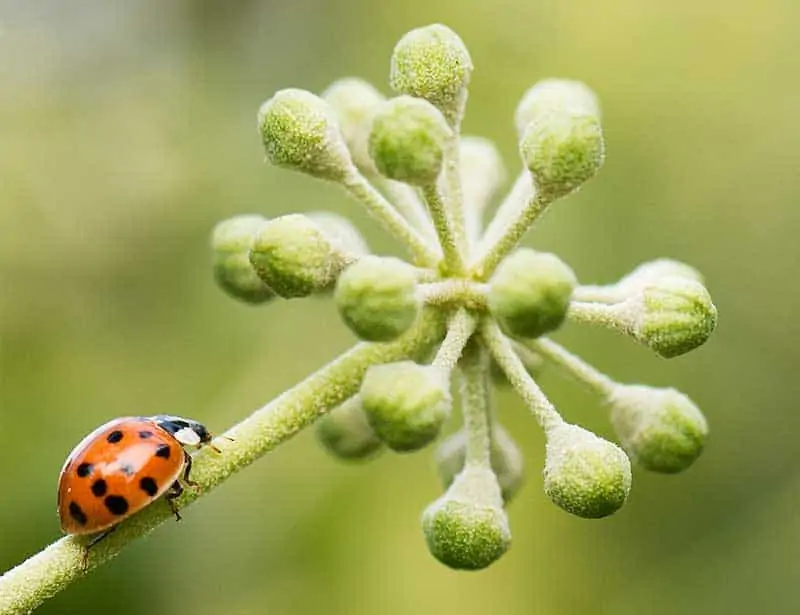
Cross-culturally and historically, ladybugs are symbols of luck and positivity. It’s said that when a ladybug lands on a human, we can use the number of black spots on its body to predict how many years of good luck a human might have. Also, many believe that the number of spots is the number of months one must go through before fulfilling one's greatest wish.
Crickets are also a symbol of good luck across Asia and Europe. The Chinese consider crickets a symbol of prosperity, with some households keeping them in cages for their song and good omens.
Meanwhile, in Japan, beetles are popular pets. With its enormous jaws, the incredible-looking stag beetle makes for one of the most popular beetle pets and features on numerous social media accounts.
10. Bugs Have Strong Wings
We often think of bugs as tiny, feeble, and fragile. However, some parts of these insects, such as their wings, are unbelievably strong. Their wings are from cuticles, strengthened by veins.
Another amazing fact about bugs is that if their wings break, they must live with it for the rest of their life. In most cases, they live and survive with these broken wings successfully.
11. Bugs Are Weather Forecasters
Did you know that people use bugs to predict temperature? In many areas of the world, crickets predict the weather. People work out the outside temperature by counting the cricket chirps per minute and then dividing it by 4. They then add the result to 40, providing an estimated outdoor temperature.
12. Bugs Fart
Like humans, bugs fart to release gas. The most common types of gas produced by bugs are hydrogen and methane. In addition, some of these bugs have pretty smelly farts, but we don’t perceive them since they come out in tiny volumes.
13. Stoneflies Do Push-ups to Attract Prospective Mate
Stoneflies are bugs that do push-ups to attract a prospective mate. These fitness fanatics prefer to live in streams and waters, and there are 500 existing species of stoneflies in North America alone.
Usually, they mate in swarms and prolifically. When they mate on the ground, male stoneflies beat their body to the ground or vegetation to attract female mates.
14. Phylliidae Bugs Resemble Plants Leaves
Phylliidae bugs, also known as leaf bugs, mimic leaves for camouflage. They camouflage and take leaves' appearances so well that lurking predators pass them by, assuming they
are real leaves. These walking leaves further confuse their predators by rocking back and forth to mimic leaves blowing in the wind.
15. Termites Like Rock Music
One of the more surprising bug facts worth sharing is that termites use vibration for the identification of the types of wood around them. This vibration allows them to find the best source of food. The sound of heavy metal or rock music increases their chewing pace, getting through wood faster, which has led some to believe they are fans of the genre.
16. Bugs Have Brains
Owing to the tiny size of these creatures, you might assume bugs don’t have brains, but they do. Even the tiniest of bugs have brains; however, their brains are not as important as brains are to humans. As a result, they can do without their head for days as long as there is no loss of high amounts of hemolymph or blood-like fluid.
17. Bugs Also Feel Pain
It’s essential to state that even with tiny and fragile body parts, bugs feel pain too.
With the recent advancements in technology, research shows that insects also feel chronic pain that lasts long after a head injury or trauma3. Scientists also confirm that most bugs and insect species experience some sort of pain.
18. Bugs Are Food
Humans, animals, and all organisms depend on food for survival, which bugs can provide. Insects produce honey perfect for our toast and sweet tooth. Apart from the honey they produce, some insects are also edible. In the United States, people eat some insect species as novelties, whereas eating beetles and insects is popular throughout many Asian cultures.
According to the Food and Agriculture Organisation, there are over 1,900 edible insect species9 beyond beetles.
19. Bugs Are Used for Health Care
Some types of bugs help treat infections and diseases. History has it that species of biting ants have been used as sutures to close wounds. Not only that, some tests reveal that bee venom from stings can treat diseases2 like tendonitis, sclerosis, and arthritis.
20. Some Bugs Are Very Strong
The dung beetle, a pint-sized powerhouse, holds the record for the world's strongest insect. A Dung Beetle can pull 1,141 times its own body weight - the equivalent of a human lifting six double-decker buses!
But their strength isn't their only remarkable trait. Dung Beetles have a unique diet - animal feces, or 'dung.' They roll up this dung into a ball, often larger than themselves, and transport it away to feed their offspring.
Related read: World's Strongest Animals & Dung Beetle Facts.
Economic and Environmental Bug Facts
21. Lady Bugs Are Beneficial to the Garden
Even though we often regard bugs as pests, many of them are anything but. The ladybug, for instance, performs wonders in our gardens. Because the ladybug feeds on other insects, it helps protect the garden from plant nuisances, damaging insects, fruit flies, and mites. It can eat 5,000 insects in its whole lifetime.
According to research, adult ladybugs eat over 50 aphids daily1. This, in turn, helps increase harvest yields and keeps pests like fruit flies in check.
Interestingly, the first animals in space were fruit flies. More specifically, they were the first animals that experts intentionally sent to space.
22. Bugs Help Pollination
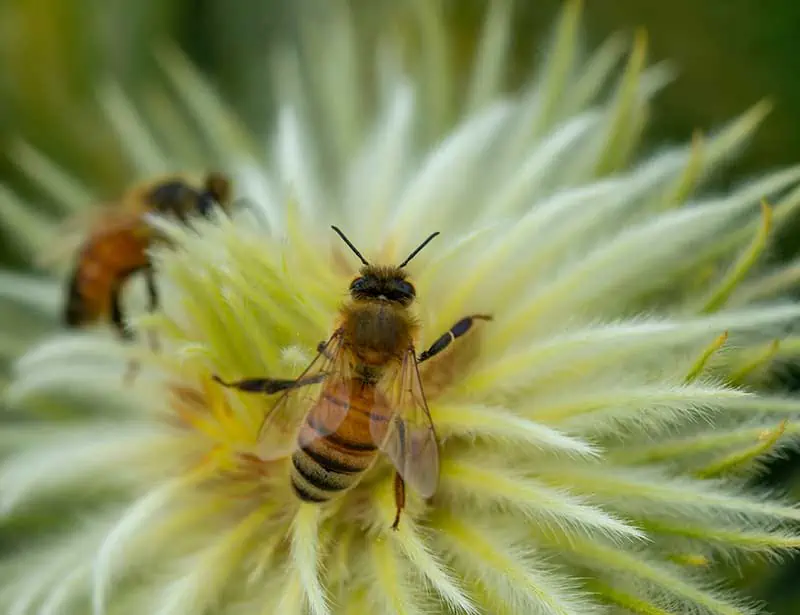
Not all bugs are bad. Whereas some bugs get a bad rep as irritants, some bugs help out. Part of this help is through the pollination of plants. Insects like butterflies, honey bees, native bees, and moths pollinate plants.
The honey bee is one of the most important pollinators and carries out 80% of all pollinations in the United States. Honey bee pollination favorably affects about 20 billion dollars in crops per year. This includes fruits, vegetables, and many nuts.
Read more: Check out our rundown on the different types of bees, and spare a thought to the worker bees, laboring away to help ensure queen bees lay eggs as we explore in depth if bees are endangered.
23. Bugs Contribute to the Economy
Of all bugs, the bee contributes to the economy the most. Manufacturers use beeswax as a base for ointments, polishes, and eco-friendly candles. The usage of beeswax is prevalent in the cosmetic manufacturing of zero-waste lotions, creams, lipsticks, and natural zero-waste cosmetics.
Britain alone imports 1 million pounds of beeswax for use in manufacturing. Aside from beeswax, bees provide honey, and the honey bee can produce 220 jars in a year, contributing to the economy.
Also, silk is a valuable product with great recognition. Tonnes of raw silk are produced annually in China, where around 80% of the world's supply originates.
Producers derive silk from the cocoon of an insect called the Silkworm, Bombyx mori. Each cocoon has a filament around 2000-3000 feet (600-900 meters) in length. Experts use twisted 5-8 of the filaments to make one thread and weave these together to create silk fabric.
Spiders are known for their webs, which come out as liquid from the spider’s spinneret. When in contact with the air, this liquid solidifies and becomes very strong. Some research shows that the strength of this hardened liquid is five times more than steel's. This earns it the title of the strongest fiber5.
24. Some Bugs are Globe Trotters
Did you know that the Brown Marmorated Stink Bug is a seasoned globetrotter? Originally native to East Asia, this adventurous insect made its way to North America and Europe, becoming a significant agricultural pest in the process.
Its name comes from the marbled or mottled brown color on its shield-shaped body. Emitting a foul odor when threatened or squashed is the stink bug's key defense mechanism, a fact that makes it a less-than-welcome guest in homes.
However, this stinky bug serves an ecological purpose by feeding on various plant species and helping control their populations.
Conclusion
Researchers have long documented and recognized that insects are the most diverse group of organisms. Not only do they stand out by population and variety alone, but there are also facts about these animals that make them fascinating, noteworthy, and worthy of our appreciation.
Bugs help humans and contribute to the economy of nations as well. Whether you are an entomologist or just a lover of insects and bugs, these cool facts about bugs will interest you. From ladybugs and beetles to other bugs, there’s much to discover and many cool bug facts about these tiny jumping and flying creatures.
Related: To further explore the animal kingdom, check out some of the other animals that start with B.
| 1 |
Saeed, K., Khattak, M., Khan, F., Naz, F., & Akhtar, N. (2016, October 31). Morphological Characteristics of Ladybird Beetles (Coccinellidae: Coleoptera) of District Buner, Khyber Pakhtunkhwa, Pakistan |
| 2 |
Moreno, M., & Giralt, E. (2015). Three valuable peptides from bee and wasp venoms for therapeutic and biotechnological use: melittin, apamin and mastoparan. Toxins, 7(4), 1126–1150. https://doi.org/10.3390/toxins7041126 |
| 3 |
Khuong, T. M., Wang, Q. P., Manion, J., Oyston, L. J., Lau, M. T., Towler, H., Lin, Y. Q., & Neely, G. G. (2019). Nerve injury drives a heightened state of vigilance and neuropathic sensitization in Drosophila. Science advances, 5(7), eaaw4099. https://doi.org/10.1126/sciadv.aaw4099 |
| 4 |
Stork N. E. (2018). How Many Species of Insects and Other Terrestrial Arthropods Are There on Earth?. Annual review of entomology, 63, 31–45. https://doi.org/10.1146/annurev-ento-020117-043348 |
| 5 |
Gu, Y., Yu, L., Mou, J., Wu, D., Zhou, P. & Xu, M. (2020). Mechanical properties and application analysis of spider silk bionic material. e-Polymers, 20(1), 443-457. https://doi.org/10.1515/epoly-2020-0049 |
| 6 |
Kaya, M., Sargin, I., Al-Jaf, I., Erdogan, S., & Arslan, G. (2016). Characteristics of corneal lens chitin in dragonfly compound eyes. International journal of biological macromolecules, 89, 54-61. |
| 7 |
Adis, J. (1990). Thirty Million Arthropod Species-too Many or too Few? Journal of Tropical Ecology, 6(1), 115–118. http://www.jstor.org/stable/2559375 |
| 8 |
Morgan, E. (2013). Next time you see a pill bug. National Science Teachers Association. |
| 9 |
FAO. (2013). Edible Insects |
Jen’s a passionate environmentalist and sustainability expert. With a science degree from Babcock University Jen loves applying her research skills to craft editorial that connects with our global changemaker and readership audiences centered around topics including zero waste, sustainability, climate change, and biodiversity.
Elsewhere Jen’s interests include the role that future technology and data have in helping us solve some of the planet’s biggest challenges.

